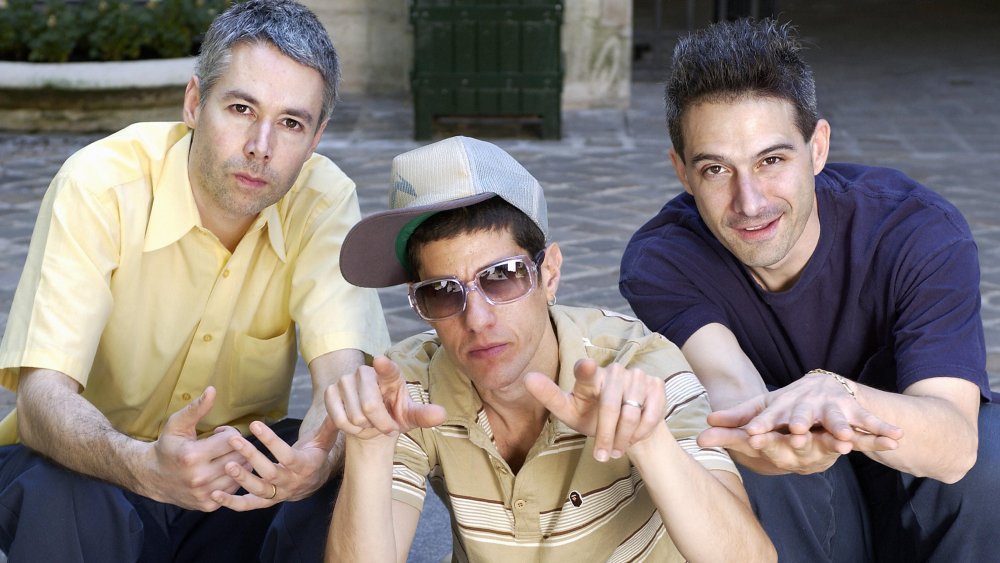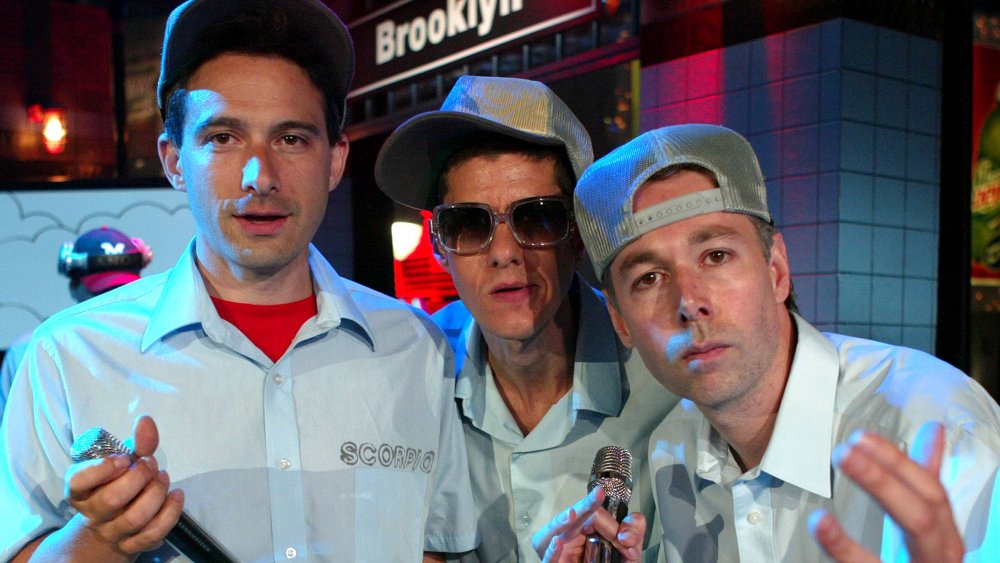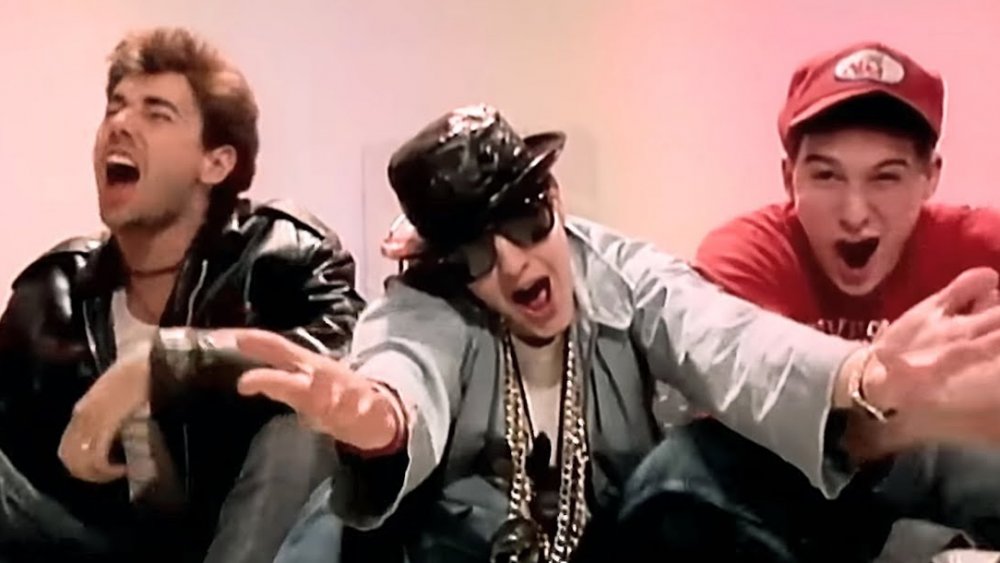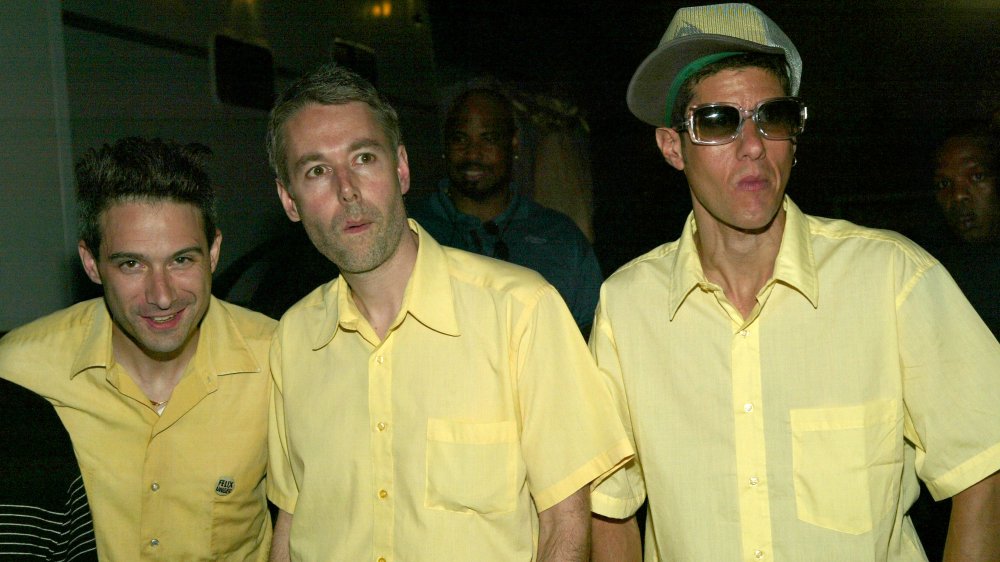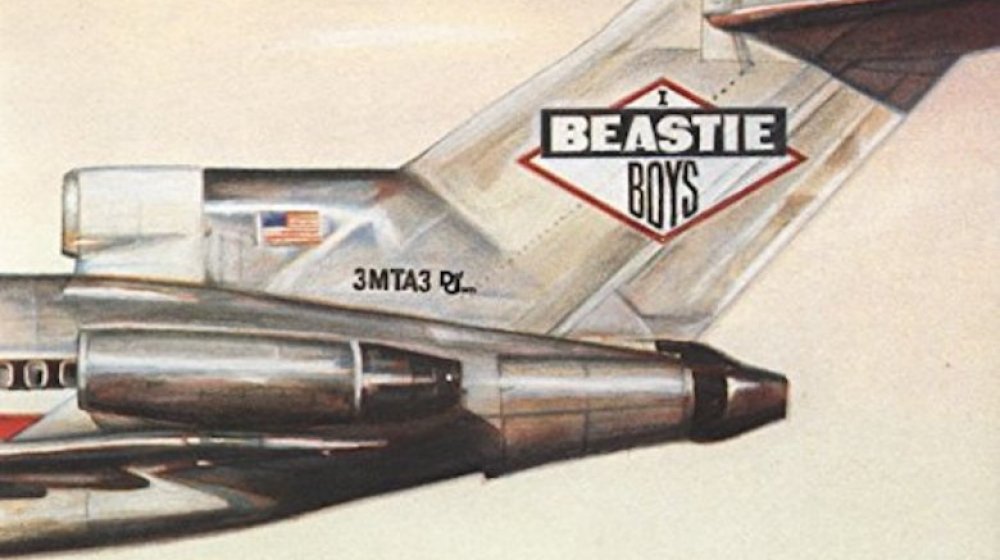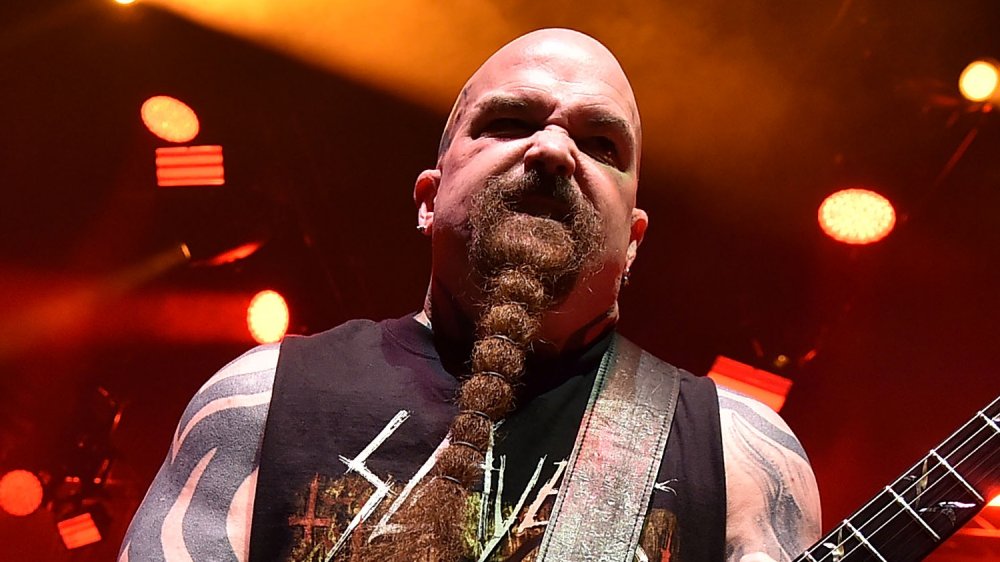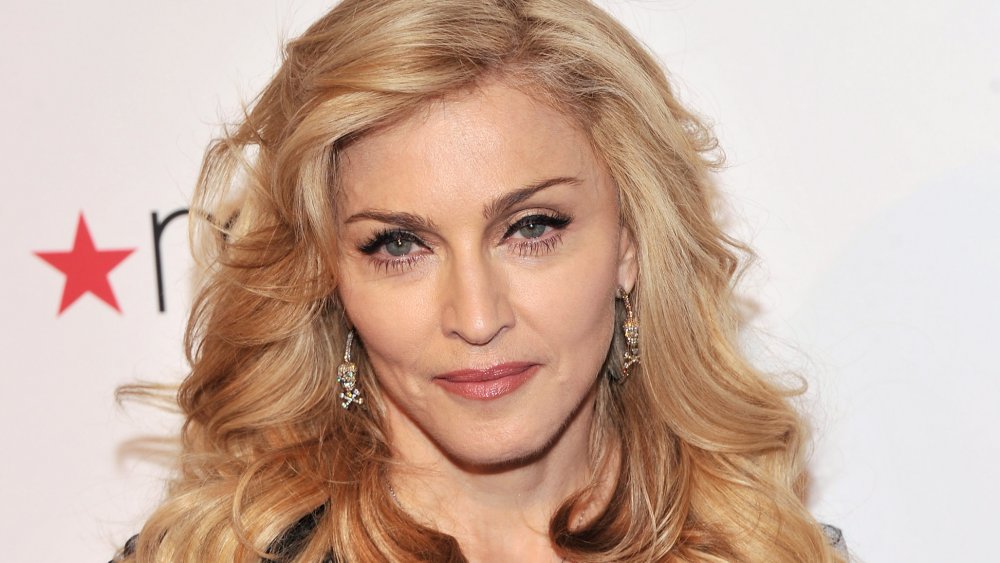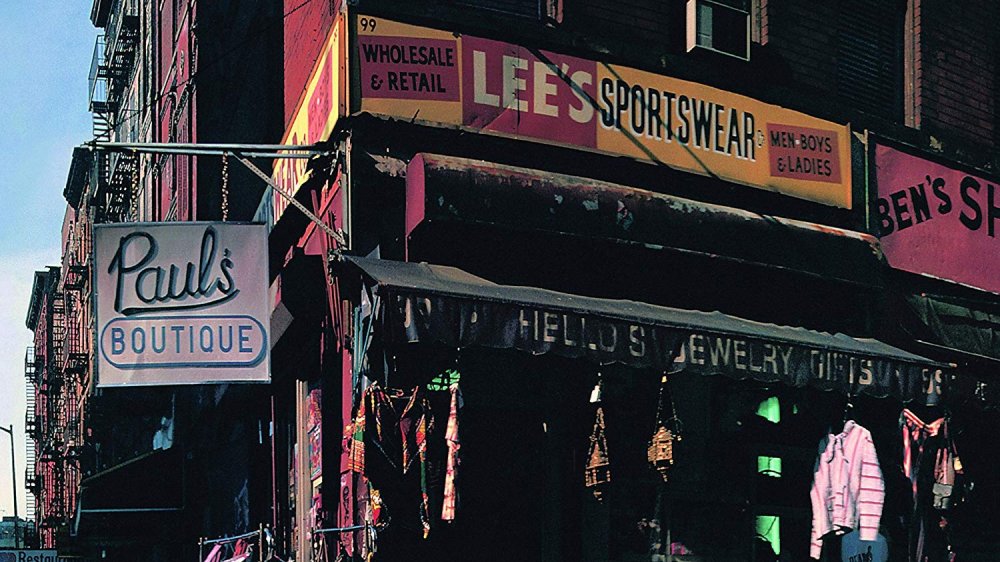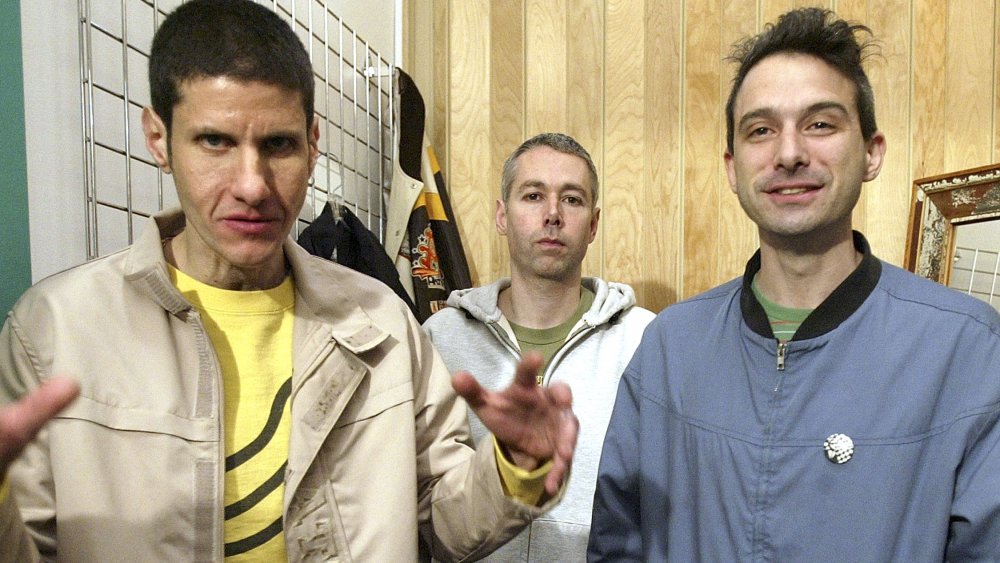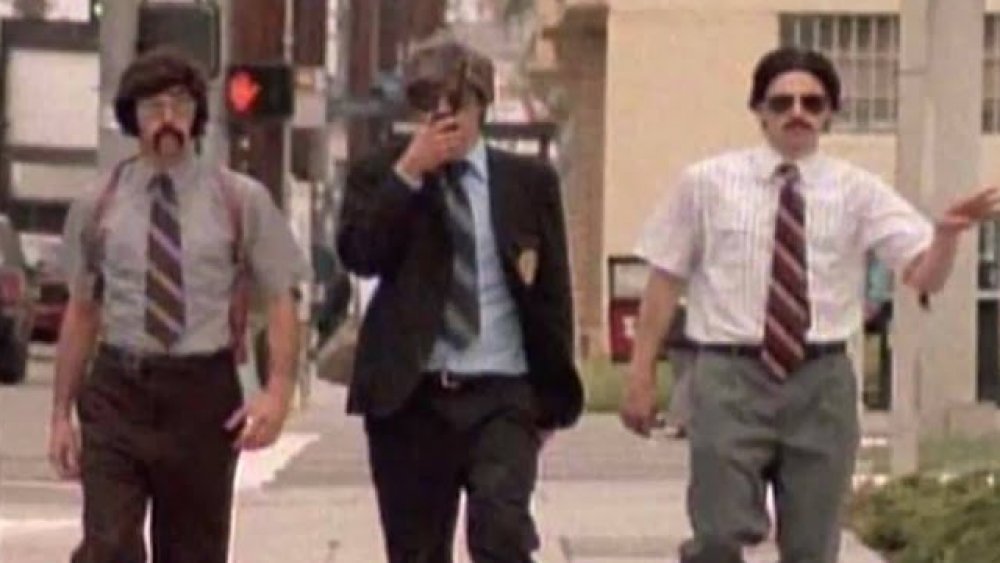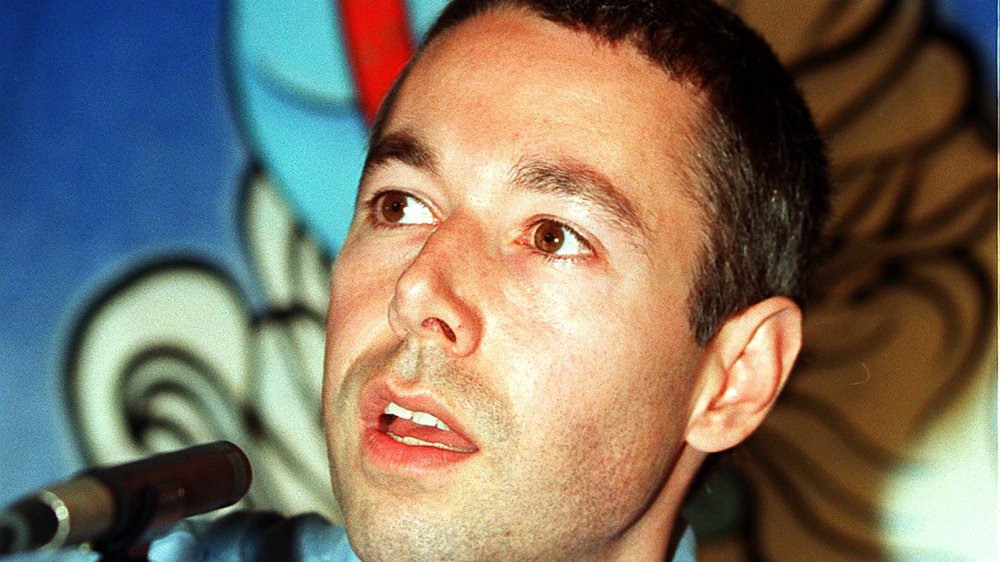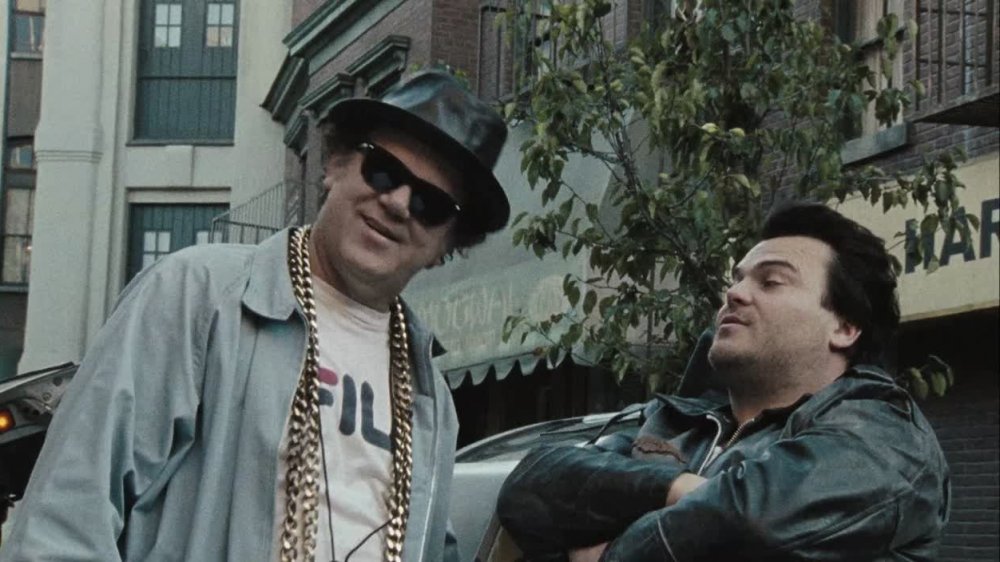The Untold Truth Of The Beastie Boys
The Beastie Boys — three friends from New York who became one of the biggest rap acts of all time — never took themselves too seriously. For three decades, they brought down the house and got the party started with their humorous, wry, meta rhymes and rock-infused hip-hop beats. All with a distinctive voice and style, MCA (Adam Yauch), Mike D (Mike Diamond) and King Ad-Rock (Adam Horovitz) brought rap to the suburbs and bridged the gap between alternative rock and hip-hop. How could they not? They churned out one classic track after another like "No Sleep till Brooklyn," "Brass Monkey," "Hey Ladies," "So What'cha Want," "Paul Revere," "Sabotage," "Intergalactic," and so many more. These "three MCs and one DJ" (shoutout to Mix Master Mike) disbanded in 2015, three years after the way-too-early death of Yauch to cancer. The group's story remains remarkable, so make some noise and ch-check out this sure shot of the history of Brooklyn's finest, the Beastie Boys.
They were Young Aborigines before they were Beastie Boys
The Beastie Boys' adept and innovative sound mixed equal parts hip-hop and hard rock. They got the hip-hop from growing up in Brooklyn and absorbing the emerging musical styles that originated in the area. They got the hard rock down from having once been a very loud and very heavy metal band. When future Beastie Boy Michael Diamond was an actual boy in the late 1970s, he played drums in a thrash-meets-hardcore band called the Young Aborigines. According to Exclaim, he met Adam Yauch at a Bad Brains show, and they became fast friends and then band mates. See, Yauch started attending Young Aborigines practices, and one day, he subbed in for bassist Jeremy Shatan when the latter had to leave early to do his homework, and eventually, he replaced Shatan outright.
At this point, the band renamed themselves the Beastie Boys, a purposely terrible name, and played Yauch's birthday party and recorded an EP called Polly Wog Stew, with Diamond moving to vocals and Kate Schellenbach moving from percussion to drums (she'd later sit behind the kit for '90s band Luscious Jackson) and John Berry on guitar. Those two left the group by early 1983, prompting guitarist Adam Horowitz of the band Young and the Useless to join. It was around that time that Diamond and Yauch first got really into hip-hop, particularly the Sugarhill Gang and Grandmaster Flash, and the Beastie Boys new direction was solidified.
(You Gotta) Fight for Your Right (For Irony)
The Beastie Boys' first (and only) top 10 single was their breakout jam, "(You Gotta) Fight for Your Right (To Party!)." It soon became the enduring and unofficial theme song for partying hard and standing up for one's inherent need to do so. It should've been obvious that a song with two unnecessary parentheticals and an exclamation point wasn't supposed to be taken seriously. "It was just kind of like one of those, like, 'Smokin' in the Boys Room' type things. Just thought it was kind of funny," Yauch told Fresh Air in 2011, later adding, "We were just kind of making this dumb song, that it'd sit somewhere on the album." Instead, Columbia Records chose to make it the most prominent Licensed to Ill single. "I think maybe we just ended up with a different bunch of fans than we expected, "Yauch said, before saying, "And so, the next thing you knew, we would go out and play shows, and the whole place would just be full of, like, frat boys."
In the liner notes of the Beasties greatest hits collection The Sounds of Science (per Fresh Air), Yauch wrote that the band evolved into the dude-bros they'd mocked. "By drinking so much beer and acting like sexist, macho jerks, we actually became just that." Fearing that trajectory, the Beastie Boys didn't play "Fight for Your Right" live after 1987.
Licensed to pick horrifying album titles
The Beastie Boys' backfiring joke of a song, "(You Gotta) Fight For Your Right (To Party!!)," was the group's first major hit and the second single off its debut album, Licensed to Ill. Helmed by mega-producer Rick Rubin (he's also worked with Run-D.M.C., Public Enemy, and Johnny Cash), Ill was the first rap LP to ever top the Billboard album chart, and Rolling Stone counts it among the best albums ever made.
Those achievements may have been harder to come by had the album hit stores with its working title. "The original title to this record was Don't Be a F*****. It was Rick Rubin's idea, but we went along with it," Adam Horowitz wrote in Beastie Boys Book. Like "Fight For Your Right," that slur-based title "was meant to be a joke about jock frat dudes, but homophobia's not funny and we are truly sorry."' That backs up an apology Horowitz offered on behalf of the band in a letter to Time Out New York (via Entertainment Weekly) in 1999 for "the s***** and ignorant things we said on our first record. There are no excuses. But time has healed our stupidity."
The Beastie Boys take aim at Led Zeppelin
The Beastie Boys first album, License to Ill, hit stores in November 1986. The physical media came encased in one of the '80s most memorable album covers, which featured the back end of a plane mid-flight, emblazoned with Beastie Boys signage. (It folds out to reveal the rest of the plane, crashed and crumpled.)
The inspiration for the artwork was none other than the legendary rock band Led Zeppelin. In 100 Best Album Covers (via Diffuser), producer Rick Rubin revealed that while Ill was being made, he'd read the Zeppelin tell-all Hammer of the Gods. "In the book, there is a photograph of the Led Zeppelin private jet, and the idea of this cover came from that," Rubin said. "The Beastie Boys were just a bunch of little guys, and I wanted us to have a Beastie Boys' jet. I wanted to embrace and somehow distinguish, in a sarcastic way, the larger-than-life rock 'n' roll lifestyle."
And because the Beastie Boys loved to joke around, there's a hidden, puerile Easter egg on the cover. The plane's serial number is an unassuming "3MTA3." Hold that up to a mirror, and it reads "EAT ME."
Slaying with Slayer
The Beastie Boys distinct mix of hard-rock melodies with hip-hop vocalizing was solidified on the Licensed to Ill single "No Sleep till Brooklyn." While it's full of Beastie Boys lyrical hallmarks — funny lines and odd pop culture references — its lasting legacy is the hooky, monster guitar riff. Repeated throughout the song, it may seem like a sample of some obscure but catchy '70s hard rock song, but it was a wholly original, created by producer Rick Rubin.
"Usually, the way it worked was I would make the tracks first, then the guys would come in and do vocals," Rubin told Rolling Stone. "So I played the guitar on it in the room by myself." Perhaps even better than Rubin's rocking riff is the "No Sleep till Brooklyn" epic guitar solo, a wailing bit of '80s-style show-offy shredding, which came courtesy of Kerry King, longtime guitarist for Slayer, one of the heaviest bands around. While he certainly nailed the job he was hired to do, King and the Beasties weren't a good fit. "He's a real, serious metalhead," Rubin said. "I don't think it spoke to his aesthetic. And honestly, in retrospect, I don't think he really spoke to the Beasties' aesthetic. They didn't really like him either."
When the Beastie Boys met Madonna
The first time the Beastie Boys played New York's illustrious Madison Square Garden was in 1985, before the release of their first full-length album Licensed to Ill. Madonna's management selected the trio to be the opening act on her "The Virgin Tour." (According to Spin, they got the gig because Run-D.M.C. would've commanded too high a fee and because the Beasties' manager convinced Madonna's people that the Fat Boys were busy — even though he didn't actually know that.) If a wedding dress-clad pop star and a semi-serious rap collective seems like an odd fit, it was. "They were very bad boys," Madonna told Spin. "They said 'f***' all the time on stage. The audience always booed them, and they always told everyone to f*** off. I couldn't understand why everyone hated them — I thought they were so adorable."
The Beastie Boys proved so unpopular with Madonna fans that "they did a lot more than" booing, Mike Diamond told Fresh Air. "Some audience members were crying, actually." Adam Yauch added that he got "yelled at by a parent because we were cursing." It got so bad that management nearly replaced them mid-tour, which Madonna personally prevented from going down.
The story behind Paul's Boutique
By the late '80s, the pressure was on for the Beastie Boys to produce a follow-up to Licensed to Ill (which went on to sell 10 million copies). But in the immediate aftermath of its release in 1986, hip-hop had exploded in popularity and creativity, with acts like N.W.A., Public Enemy, and De La Soul emerging and taking the form to new heights. If the Beastie Boys wanted to prove their mettle, their second album had to be pretty good.
While Ill leaned hard on the rock part of "rap-rock," Paul's Boutique was almost purely hip-hop and, as such, built around sampling. The non-lyrical part of the album was the work of the Dust Brothers, producers who'd intended for the music that became Paul's Boutique to be their own record. "They had a bunch of music together, before we arrived to work with them," Adam Yauch told Clash. "As a result, a lot of the tracks on Paul's Boutique come from songs they'd planned to release to clubs as instrumentals — 'Shake Your Rump,' for example. They'd put together some beats, basslines, and guitar lines, all these loops together, and they were quite surprised when we said we wanted to rhyme on it." The Beasties enjoyed critical acclaim for Paul's Boutique — Rolling Stone gave it four stars — but it didn't come close to matching the success of the chart-topping Licensed to Ill. It peaked at #14 on the Billboard album chart and finally reached double platinum status ten years after it hit stores.
Ad-Rock would ad block
The Beastie Boys always had a punk attitude to go with their punk-influenced sound, and Adam Yauch ensured that his anti-corporate sentiments would continue after his death. Before he passed away in 2012, he wrote a clause into his will (per DNAinfo) stipulating that the music he recorded with the Beasties never be sold for use in commercials. That didn't stop a couple of advertisers from using Beastie Boy tracks anyway.
According to Pitchfork, in 2012, Monster Energy Drink took the audio from a DJ set at a music festival, which comprised sections of "Sabotage," "So What'cha Want," "Make Some Noise," and "Looking Down the Barrel of a Gun," and used them to soundtrack an ad that ran on its website. The Boys sued and won a $1.7 million judgment. In 2012, (per The Hollywood Reporter) toy maker GoldieBlox used a parody of "Girls" in an online ad, and in an odd ploy, took the Beastie Boys to court before they could sue, arguing that since the song was a parody, it constituted fair use and was legal. The Beastie Boys countersued, claiming copyright infringement, and won, forcing GoldieBlox to publicly apologize and donate to a charity that promotes science and tech education for girls.
Despite Yauch's will and undertaking legal action when necessary, the Beastie Boys did consent to the use of their songs in trailers for the video game Destiny 2 and for all three recent Star Trek movies.
The inspiration for 'Sabotage'
"Sabotage" gave the world what's probably the Beastie Boys' most famous video, with the trio wearing bad wigs and fake mustaches and running around New York pretending to be 1970s TV cops. The slightly unsettling, extremely aggressive song is built on anger and frustration, full of screams and calling out those responsible for this perceived sabotage. And it's all about a real person.
According to Beastie Boys Book, (via Rolling Stone) engineer Mario Caldato Jr. worked with the band in the studio many times before, and he also helped record the album Ill Communication. It didn't go well. "We were totally indecisive about what, when, why and how to complete songs. Mario was getting frustrated," Adam Horovitz wrote. "That's a really calm way of saying that he would blow a fuse and get p***** off at us and scream that we just needed to finish something, anything, a song." Caldato kept the ball rolling, moving on with songs even if the Beasties weren't entirely done with them, all the way to an Ill Communication that was done except for one final track. That last song was "Sabotage," which was Horovitz's idea. "I decided it would be funny to write a song about how Mario was holding us all down, how he was trying to mess it all up, sabotaging our great works of art."
The Beastie Boys brought attention to Tibet
In 1992, a college graduate named Erin Potts moved to Kathmandu, Nepal, to help Tibetan refugees living there after they were forced out of their homeland by the Chinese government. At a party one night, she met Adam Yauch of the Beastie Boys. While she knew who Yauch was and wasn't a fan ("I didn't appreciate the Beastie Boys' music, I guess that's the most diplomatic way to say it," Potts told America Abroad), they ended up chatting anyway. They spoke about the Tibetan refugee crisis, as helping them was Potts' line of work and Yauch had met a few displaced Tibetans earlier in his trip. They stayed in touch, and Yauch became more concerned and involved in the refugee crisis, and together, they began planning a series of benefit concerts. After three attempts soured, the first Tibetan Freedom Concert was held at Golden Gate Park in San Francisco in 1996. Not only did bands like Smashing Pumpkins (and the Beastie Boys) play, but Yauch and Potts brought both Tibet experts and Tibetan exiles on stage to really get their message across. Five years of concerts later — some of which were broadcast on MTV and the internet — Yauch and Potts had raised millions for their cause.
The Beastie Boys fought for their right to party once again
While the Beastie Boys came to resent "(You Gotta) Fight for Your Right (To Party!)" because it attracted the wrong element and misrepresented them as a band, the group still had a fondness for the song that made them famous ... or at least for the comical music video that depicts a house party gone wild. And in 2011, Beastie Adam Yauch directed a short film called "Fight for Your Right (Revisited)," a 30-minute, cameo-laden follow-up to that famous video. It was also cut down to a few minutes to serve as the video for "Make Some Noise," a single off the band's final studio album, Hot Sauce Committee Part Two.
Both iterations are arguably funnier than its predecessor. The Beastie Boys don't appear as themselves in the video, ceding their "roles" to Seth Rogen (as Mike D), Elijah Wood (Ad-Rock), and MCA (Danny McBride). The three get drunk and break stuff before being challenged to a dance fight by the Mike D, Ad-Rock, and MCA of the future — portrayed by John C. Reilly, Will Ferrell, and Jack Black who arrive in a time-traveling DeLorean.
